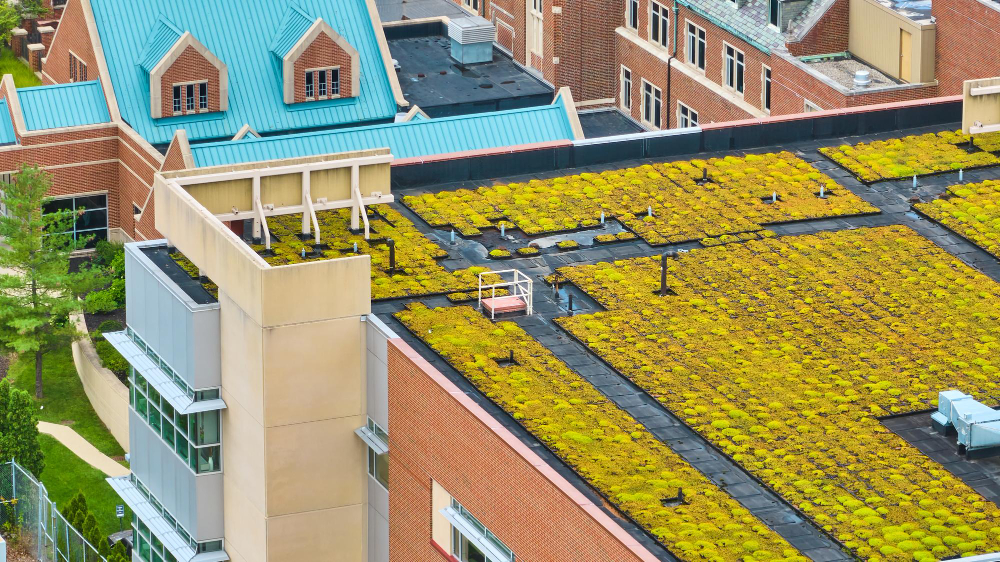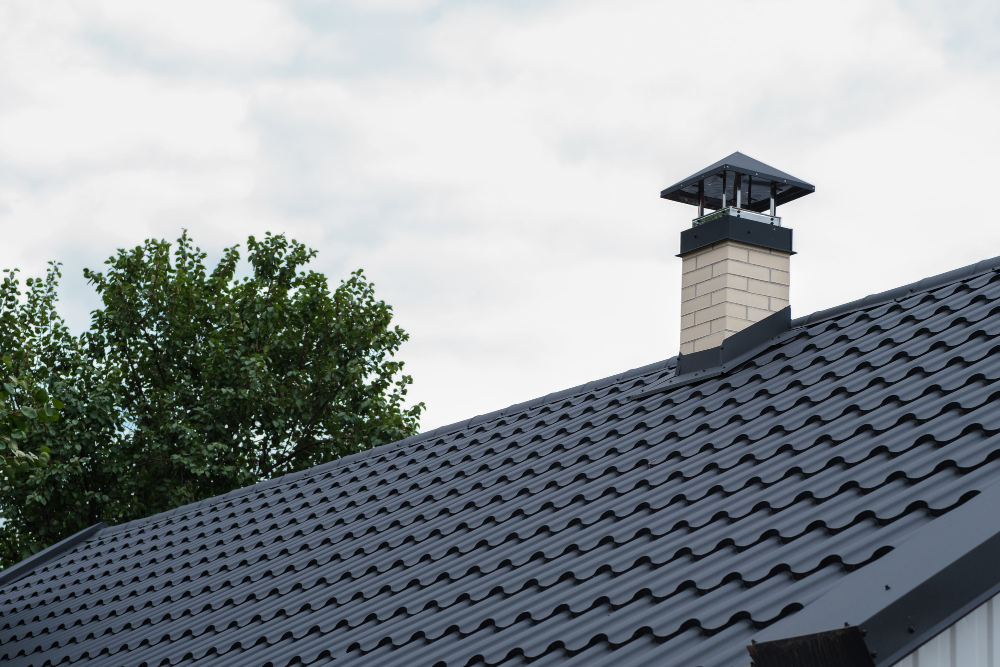Last updated on
In today’s environmentally conscious world, the choice of roofing materials and designs is more important than ever. Homeowners and builders are increasingly seeking options that not only offer durability and style but also align with sustainable practices.
This comprehensive guide explores a variety of eco-friendly roofing options that deliver on both functionality and aesthetic appeal. From innovative materials to energy-efficient designs, these solutions address the growing demand for environmentally responsible building practices while ensuring that style and structural integrity are not compromised.
The Rise of Green Roofing

Green roofing, an innovative and sustainable roofing solution, is gaining popularity for its environmental and aesthetic benefits. These living roofs are blanketed with vegetation, transforming rooftops into vibrant, green landscapes.
They play a crucial role in enhancing urban air quality, providing natural insulation, and supporting biodiversity. Green roofs are particularly effective in urban settings, where they help reduce the heat island effect and manage stormwater runoff.
They also offer a serene, natural space in densely populated areas. Beyond their ecological advantages, green roofs add a unique, visually appealing element to buildings, merging modern architecture with the beauty of nature.
Solar Roofing: Harnessing the Power of the Sun
Solar roofing is a groundbreaking development in sustainable building design, effectively combining energy production with traditional roofing. These roofs incorporate photovoltaic cells, seamlessly integrated to convert sunlight into electricity.
This innovation not only reduces dependence on fossil fuels but also diminishes electricity bills. Modern solar roofing solutions are designed to complement the aesthetic of any building, merging functionality with style.
They represent a proactive approach to energy efficiency, significantly lowering a building’s carbon footprint. By opting for solar roofing, homeowners and businesses make a long-term investment in both environmental sustainability and economic savings, showcasing a commitment to a greener future.
Recycled and Reclaimed Materials: A Sustainable Choice

Utilizing recycled and reclaimed materials in roofing is a powerful stride towards sustainability. Recycled metal roofs, crafted from post-consumer or post-industrial metals, offer remarkable durability and longevity.
Reclaimed materials, such as wood or slate, provide a unique, timeless aesthetic while minimizing the demand for new resources. These choices significantly reduce environmental impact by diverting materials from landfills and decreasing the energy required for manufacturing new products.
Additionally, they often come with stories of their past lives, adding character and depth to a building’s appearance. This approach not only benefits the environment but also offers homeowners a chance to be part of a larger narrative of ecological responsibility and resourcefulness.
Cool Roofs: Reflecting Heat and Saving Energy
Cool roofs are an innovative solution designed to combat heat absorption, a common issue with traditional roofing. By using materials that reflect sunlight and emit heat more efficiently, they maintain lower surface temperatures.
This feature is particularly beneficial in warmer climates, where it can significantly reduce cooling costs and improve indoor comfort. Additionally, cool roofs contribute to mitigating the urban heat island effect, leading to cooler urban environments.
Their implementation is a step towards energy conservation and a reduction in greenhouse gas emissions, proving that smart roofing choices can have a substantial impact on both personal and environmental well-being.
Rubber Roofing: Durable and Eco-friendly
Rubber roofing, often made from recycled tires, stands out as a resilient and sustainable roofing option. This material’s inherent durability makes it resistant to weather extremes, contributing to a longer lifespan and reduced repair costs. Rubber roofs are also energy-efficient, providing substantial insulation that helps in maintaining indoor temperature and reducing energy consumption.
Their waterproof nature further ensures protection against leaks. By choosing rubber roofing, homeowners and builders not only opt for an eco-friendly solution but also invest in a cost-effective and low-maintenance option, demonstrating that environmental consciousness and practicality can go hand in hand in building design.
The Importance of Professional Installation
While choosing the right eco-friendly roofing material is crucial, professional installation is equally important. A skilled roofer ensures that your roof is installed correctly, maximizing its lifespan and efficiency. For commercial buildings, a homestead fl commercial roofer, for instance, can provide expert advice and installation services, ensuring that your roofing choice aligns with both your environmental goals and aesthetic preferences.
The Takeaway
In embracing eco-friendly roofing options, we take a significant step towards a sustainable future. Whether it’s the energy-efficient solar roofs, the environmentally responsible recycled and reclaimed materials, the heat-reflective cool roofs, or the durable rubber roofing, each option offers a unique blend of style, functionality, and ecological sensitivity.
These roofing choices not only enhance the aesthetic and energy performance of buildings but also reflect a growing commitment to environmental stewardship. By prioritizing sustainable roofing solutions, we contribute to a healthier planet, demonstrating that responsible building practices can coexist with innovative design and efficiency.
Table of Contents




